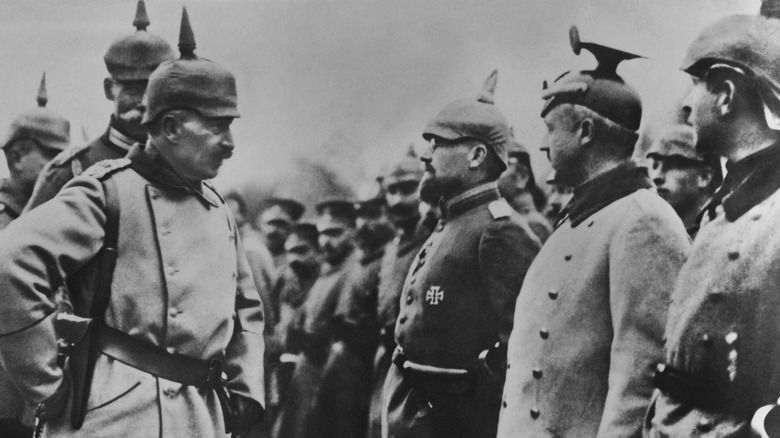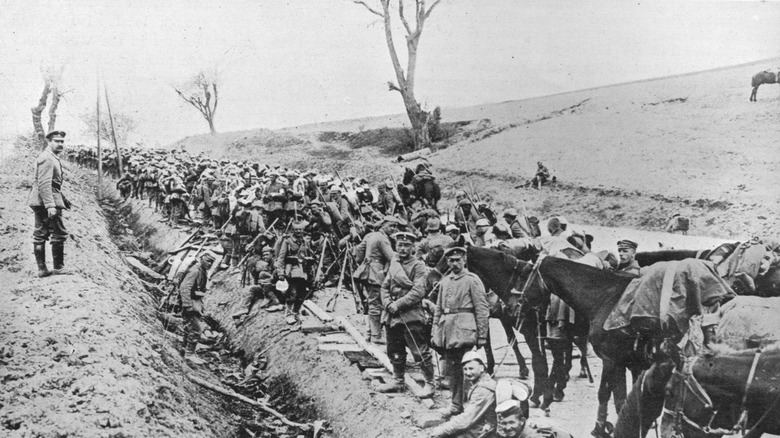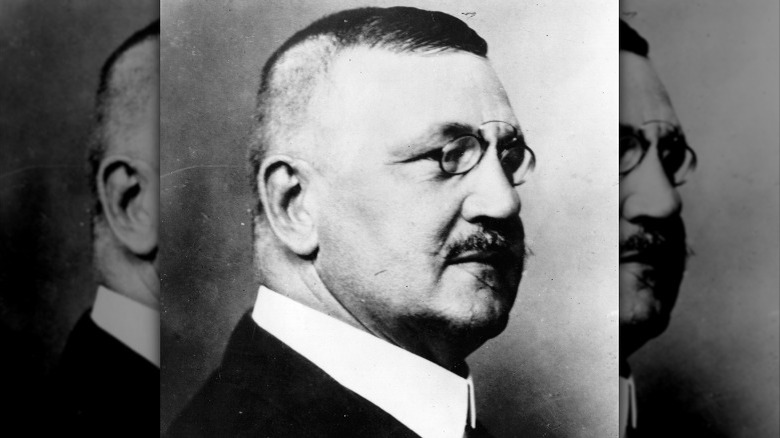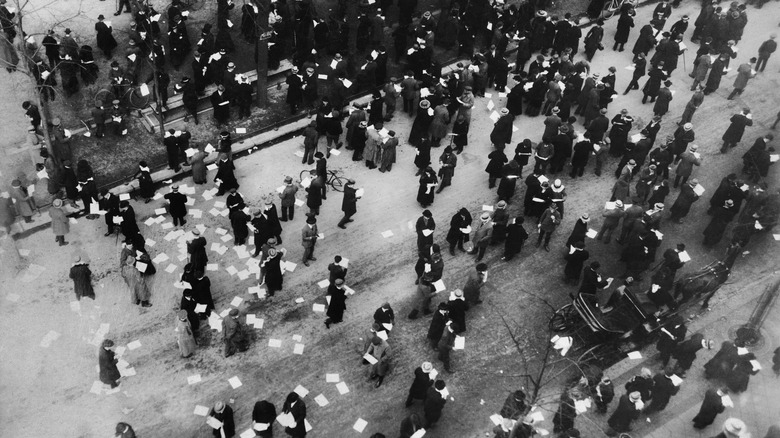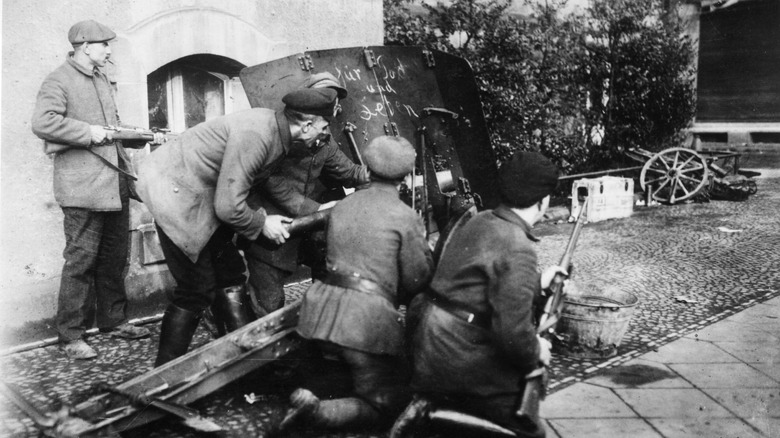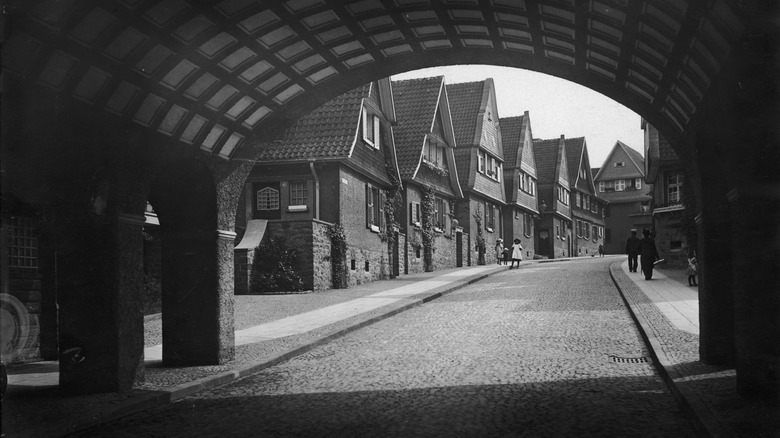How Germany Experienced 2 Uprisings Within Days Of Each Other
In the years between World War I and World War II, Germany was a lot of things, but stable was not one of them. This is the case for pretty much any nation that finds itself on the losing end of a war — World War I — but for Germany, that instability allowed the Nazi Party to gain control of the country. That, in time, plunged them into another war — World War II, which they also lost — and another round of instability, per History.
The Nazis came to power when Adolf Hitler became the nation's chancellor, an appointment that was the byproduct of several election victories for the party, per the National World War II Museum. However, while the Nazis had succeeded in taking over the country through elections, they had failed in an attempt to take over part of the country by way of a failed coup d'état that became known as the Beer Hall Putsch, a name which comes from the way the movement developed through Hitler's speeches which were often given in beer halls. The plan was for the Nazis to take over the German state of Bavaria, then march to Berlin and take over the entire country. It failed, and Hitler wound up in prison.
This wasn't the only attempted uprising in the years after World War I. In 1920 there were two other uprisings within just a few days of each other.
Germany after World War I and the Weimar Republic
After World War I drew to a close in 1918, Germany was thrown into disarray. Soldiers and sailors mutinied, which brought about a revolution that forced Kaiser Wilhelm II to abdicate his throne on November 9, 1918. Soon, a new government was thrown together to take over from the military. Officials were elected who then became part of a National Assembly that hammered out a new constitution, and they gathered in February 1919. This meeting was held in Weimar, a city in eastern Germany, per Britannica. The new government became known as the Weimar Republic, after the city where it was formed.
From the beginning, the newly formed government started at a disadvantage, because just a few months after its formation, the Treaty of Versailles was signed. This kept Germany out of the League of Nations — the precursor to the United Nations — forced them to pay reparations to the Allied nations who opposed them during the war, and forced them to greatly reduce their military (via History).
The Kapp Putsch
Given the conditions imposed by the Treaty of Versailles, the Weimar Republic was practically trying to make a go of it with one arm tied behind its back. Of course, some within Germany saw an opportunity to snatch power from the weakened government. According to Britannica, one of these attempts became known as the Kapp Putsch. This attempted coup d'état occurred when the Weimar Republic attempted to disband two Freikorps brigades. Freikorps (also per Britannica) means "Free Corps" and was a name used for a handful of paramilitary groups that were comprised of former soldiers who had fought during the war. These groups were often unofficially used to put down left-wing political uprisings across the country.
The Weimar Republic government was made up of many members of the Social Democratic Party, and Freikorps members retaliated when the government tried to demobilize them. One Freikorps Brigade managed to take Berlin. A new government was thrown together, led by a politician named Wolfgang Kapp (above), and took control on May 13, 1920.
The failure of the Kapp Putsch
According to Britannica, Kapp took control of the government along with future Nazi Erich Ludendorff. Members of the Weimar Republic government fled Berlin and went to the southern part of the country. They only needed to wait a few days for Kapp and Ludendorff's government to fail on May 17.
The two men's mission was to start a rightist dictatorship, but they immediately ran into strong public opposition to their new government and its policies. Labor unions across the country went on strike to show their disapproval of the new government, and even worse for Kapp, civil servants simply refused to work for his regime. With no one willing to work with him, Kapp's government lasted only four days. He ended up fleeing the country along with a few of his co-conspirators. He eventually returned to Germany but died in 1922 while awaiting trial. Meanwhile, Erich Ludendorff went on to become a key player in the Nazi Party and was involved in the Beer Hall Putsch just three years after the failure of the Kapp Putsch.
The Ruhr Uprising
Members of the Social Democratic Party had helped in forming the Weimar Republic, which the Kapp Putsch had attempted to overthrow, per History. The Social Democratic Party, or SPD, were the ones who called on their supporters to strike, which brought the entire nation to a grinding halt and led to the end of the short-lived Kapp Putsch government.
The Ruhr region was heavily industrialized at the time, which meant that many of the people who lived and worked there were members of labor unions. As such, they were highly opposed to just about everything Kapp and the Freikorps stood for. Soon, workers formed a so-called Red Army to fight back against the Kapp. However, according to "The Communist Left in Germany 1918-1921" by Gilles Dauvé and Denis Authier (posted at the Marxists Internet Archive), the leftists fighting against Kapp, the Freikorp, and other right-wing groups, spanned the spectrum of left-wing ideologies from moderates to anarchists, and as such, they didn't see eye to eye with each other.
The fall of the Ruhr Uprising
The Red Army that came out of the Ruhr region was armed with weapons that had been hidden away since the conclusion of World War I and managed to seize more weapons that had been previously confiscated (via The Communist Left in Germany 1918-1921). However, by May 20, 1920, the labor strikes — which had been more instrumental in ending the Kapp Putsch than their weapons — came to an end.
The German government and the Ruhr factions met to discuss what to do next. They reached a deal on May 25, which included the provision that the Reichswehr — the German army — would stay out of the region. This wasn't much of a concession, as the treaty of Versailles stipulated that the region was supposed to remain neutral anyway. However, the more extreme Red Army wound up ignoring the agreement, which led to more tension.
There were major ramifications for the instability that occurred over this period of around two weeks. However, in June 1920, elections installed a more centrist government after the right-wing and left-wing uprisings.
